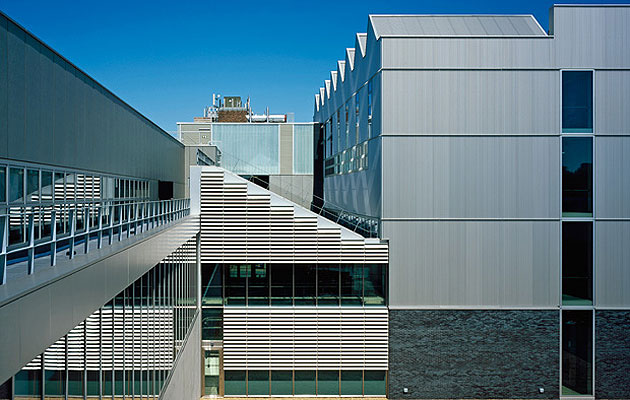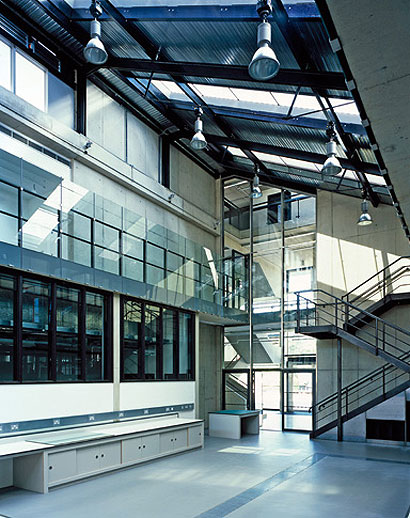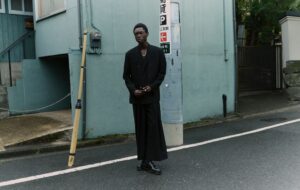|
|
||
|
It’s all change at the Royal College of Art. In recent years various big names have retired, including Nigel Coates and Ron Arad, and the college has hired a new rector, Paul Thompson. Under Thompson’s direction the school is planning to revamp its courses and nearly double in size from about 800 to 1,500 students over the next few years. The strategy is an attempt to respond to the adverse winds blowing through higher education while preserving the global reputation of the RCA, which punches well above its weight. As part of these changes, the RCA has been augmenting its second campus south of the Thames in Battersea with new facilities. Unlike the ludicrously posh main site next to the Royal Albert Hall, its patch of Battersea is post-industrial, in the shadow of Foster + Partners’ office and Albion Waterside development. Until recently it was home to just the sculpture studios, which occupied a converted industrial unit. Then in 2010 a rugged painting studio was added by Haworth Tompkins. Now the practice is finishing off a second phase, the Dyson building, which will house photographers and printmakers, as well as the small business units that “incubate” graduates as they develop their designs and practices.
The new building doesn’t cut a particularly dominant figure; its long facade is just three storeys high, with the street level consisting of a new curated gallery and a supermarket retail space. In this, it is fairly typical of almost any British new-build of the last decade or so. The upper levels are clad in large polished stone panels of a similar hue to the bricks of the original 1963 Cadbury-Brown design for the college, sombre and unassuming. Inside, however, Haworth Tompkins has produced something very interesting. “The whole concept is that of an ‘art factory’,” director Graham Haworth says. Detailing is robust, simple, yet rich, in the Haworth Tompkins manner, and while it is inspired by the previous RCA building’s “quiet intensity” – as Ian Nairn put it – it seeks to avoid the stacked, segmented feel of the original. “In Battersea, there are a lot more visual connections,” Haworth says. “There’s a lot of horizontal drift.” The design includes a large number of windows and through-views between facilities. The best view of all is provided in the large “machine hall”, through which the main circulation passes at an upper level, giving everyone a chance to see the wonderful old Victorian printmaking machines – all iron, cogs, wheels, and the smell of white spirit. There have been a lot of art school developments recently, such as Stanton Williams’ new Central St Martins campus inside a vast renovated industrial building in King’s Cross, while the results of Steven Holl’s work up at the Glasgow School of Art are eagerly awaited. For the RCA, Haworth Tompkins has created two understated yet exciting buildings – and with a phase three soon to be built, as well as various refurbishments of the original buildings and a long-term masterplan, there’s plenty for the students to look forward to. |
Image Helene Binet
Words Douglas Murphy |
|
|
||



















